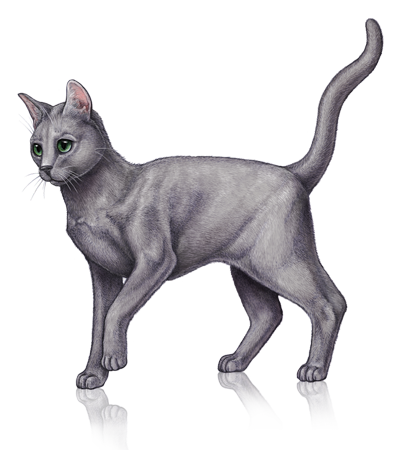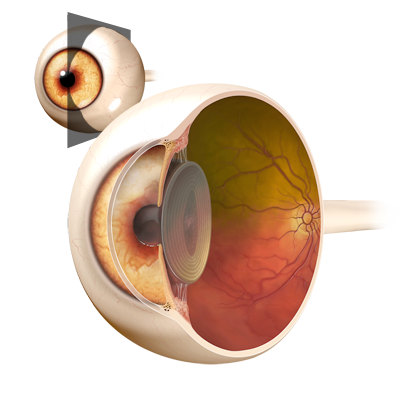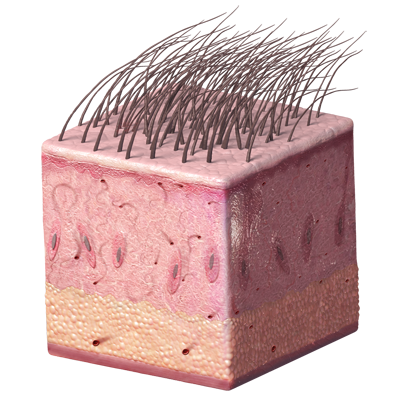
Your pet’s eyes allow perception of colors, forms, and depth. What you see from the outside represents a fraction of what the eye beholds. A dog and cat’s eye is a complex organ that offers a window into the rest of the body. When looking inside the eye with specialized equipment, your veterinarian sees blood vessels, nerves, and lymphoid tissue that cannot be seen in other areas of the body from the outside.
The structures within the eye comprise 3 basic layers: 1) the protective, enveloping layer that you see from the outside-the white sclera and clear cornea; 2) the blood vessel layer, known as the uvea, and 3) the neurologic layer or retina. Inflammation in any of these layers of the eye results in a red eye. Careful examination of these three layers by your veterinarian determines if the cause of the red eye indicates a local problem, such as conjunctivitis or glaucoma; or a systemic problem, such as retinal bleeding caused by an elevated systemic blood pressure.
The skin is the largest organ in the body; it acts like a glove over your pet’s body providing warmth and protection. Secretions from the skin keep germs and water outside the body and bodily fluids inside the body. Breakdowns in this protective barrier lead to many conditions, such as, hair loss, infections, and fluid losses.
The appearance of your pet’s skin provides insight to the overall health of your pet. Common conditions affecting your pet’s skin include: allergies, bacterial and yeast infections, ringworm, and external parasites, such as fleas and mites. Systemic conditions, such as autoimmune disorders, hormonal imbalances, or nutritional deficiencies, display characteristic patterns in the skin.
Your pet’s ears are an extension of your pet’s skin. The ears are divided into 3 sections: 1) the external ear canal extends from the outside to the ear drum, 2) behind the ear drum lays the middle ear (tympanic cavity), and lastly, 3) the inner ear. In contrast to people, the majority of ear problems in dogs and cats occur in the external ear canal. Inflammation of the external ear canal often results in bacterial and/or yeast infections. Left untreated, these infections will extend into the middle and inner ear cavity, causing diminished hearing and loss of balance.
The eyes, ears, and skin of your pet can be a gateway to the inside of your pet’s body. While the eyes, ears, and skin display their own pathologies separately, they can also be indicators of a more systemic process.
Ears

Your cat’s ears are an extension of your pet’s skin. The cat’s ear canal is divided into 3 sections: 1) the L-shaped external ear canal extends from the outside to the ear drum, 2) behind the ear drum lays the middle ear (tympanic cavity), and lastly, 3) the inner ear. In contrast to people, the majority of ear problems in cats occur in the external ear canal. Inflammation of the external ear canal, commonly caused by allergies or mites, may result in bacterial and/or yeast infections. Left untreated, these infections may extend into the middle and inner ear cavities, causing diminished hearing and loss of balance.
Eyes

Your cat’s eyes allow perception of colors, forms, and depth. Their eyes are specially adapted to see well in the dark due to the presence of a tapetum. You can see this yellow-green reflective layer of the tapetum when you shine a light in your cat’s eye in the dark. A cat’s eye is a complex organ that offers a window into the rest of the body. When looking inside the eye with specialized equipment, your veterinarian sees blood vessels, nerves, and lymphoid tissue that cannot be seen in other areas of the body from the outside. Inspection of the inner layers of your cat’s eye reveals whether the cause of the red eye indicates a local problem, (such as conjunctivitis and uveitis) or a systemic problem (such as retinal bleeding caused by an elevated systemic blood pressure).
Skin

The skin is the largest organ in the body; it acts like a glove over your cat’s body providing warmth and protection. Secretions from the skin form a barrier to keep germs and water outside the body and bodily fluids inside. Breakdowns in this protective barrier lead to conditions such as: hair loss, infections, and fluid losses. The appearance of your cat’s skin provides insight to the overall health of your pet. Common conditions affecting your cat’s skin include: allergies, bacterial and yeast infections, ringworm, and external parasites, such as fleas and mites.
What's Next
Call us to schedule an appointment
Meet with a doctor for an initial exam.
Put a plan together for your pet.

